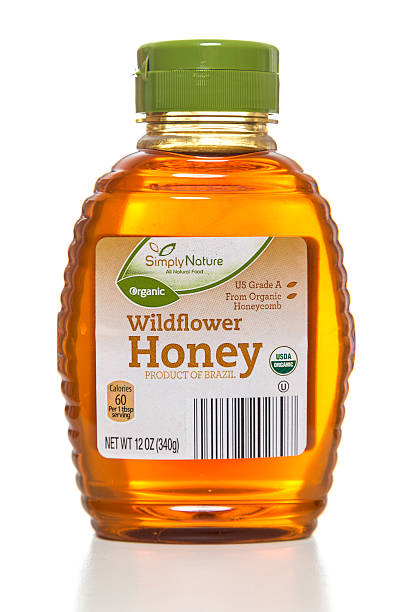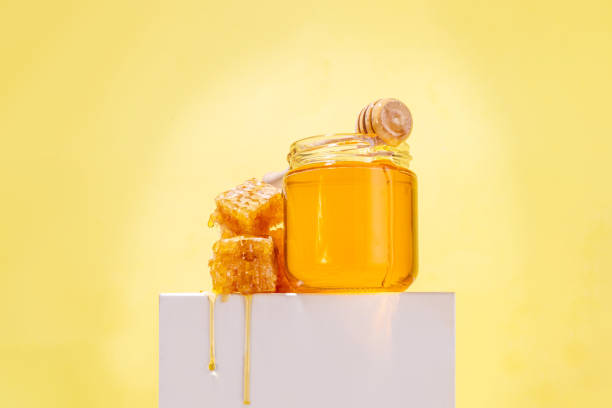Glass Honey Jars vs. Plastic: The Ultimate Guide to Storing Honey for Optimal Quality
02-07-2025
Are you in the business of honey products or use honey in your cosmetic or personal care formulations? Choosing the right container is crucial to maintaining honey quality and appealing to discerning customers. This article dives deep into why glass honey jars reign supreme over plastic jars for storing honey. Discover the secrets to preserving the natural goodness of honey in glass, ensuring your product stays fresh, flavorful, and retains its premium appeal. This guide is essential reading for anyone serious about honey storage and its impact on product excellence.
Why Does Choosing the Right Container Matter When You Store Honey?**
When it comes to store honey, the container is far more than just packaging—it's a crucial factor in preserving the honey quality and ensuring customer satisfaction. For businesses in the cosmetic, personal care, aromatherapy, or food industries, honey storage is paramount. Honey, while naturally resilient, is also susceptible to physical and chemical changes if not stored correctly. Think about it – you meticulously source high-quality honey, perhaps even raw or lightly filtered honey, to boast its natural benefits in your products. But if the packaging compromises its integrity, all that effort is undermined.
Imagine a customer opening your beautifully branded product only to find the honey has lost its delicate aroma, developed an off-flavor, or become overly crystalized. This negative experience can directly impact brand perception and repeat business. The choice of container directly influences the shelf life of honey, its taste, texture, and overall appeal. Therefore, understanding the nuances of honey storage and selecting the right honey containers is not just a detail—it's a strategic decision that safeguards your product's value and your brand’s reputation. For procurement officers like Mark Thompson, focusing on quality packaging is as important as sourcing the honey itself.
Glass vs. Plastic for Honey: What Are the Fundamental Differences in Honey Storage?**
The debate of glass jar versus plastic jars for honey in glass or honey in plastic boils down to fundamental material properties. Glass is non-reactive, meaning it doesn't interact chemically with its contents. This inert nature is a significant advantage when you store honey because it ensures the quality of your honey remains unchanged over time. Unlike plastic, glass is impermeable and doesn't leach chemicals into the honey. This is crucial for maintaining the purity and aroma of delicate honey varieties.
Plastic, on the other hand, plastic is permeable to some extent. Even food grade plastic, while deemed safe for food contact, can still allow air and moisture to permeate over time, and in some cases, certain types of plastic materials may potentially leach chemicals into the honey, especially during long-term storage or temperature fluctuations. Furthermore, plastic containers may absorb aroma and flavors from the honey, and conversely, may impart a subtle plastic taste, particularly if it's not high-quality or designed for extended food storage. When considering honey storage, the non-reactive and impermeable nature of glass provides a superior barrier, ensuring the safety of the honey and preserving its intrinsic qualities far better than plastic jars.

Does Storing Honey in Plastic Containers Really Affect the Taste and Aroma?**
The question of whether storing honey in plastic containers affects taste and aroma is a valid concern, especially for honey producers and businesses using honey as a key ingredient. While high-quality food grade plastic is designed to minimize chemical migration, the subtle porosity of plastic means it's not entirely inert like glass. Over time, especially with long-term storage, plastic containers may allow air and moisture to interact with the honey, potentially leading to subtle changes in taste and aroma.
Think about the delicate floral notes of a lightly filtered honey or the rich, complex aroma of buckwheat honey. These nuances can be diminished if honey is stored in plastic. Some consumers have reported a slight "plastic" taste when honey is stored in plastic containers, although this is often subtle and may depend on the type of plastic and the duration of storage. Moreover, plastic containers may absorb some of the honey's volatile aromatic compounds, leading to a weakening of its natural aroma profile. While these changes may not always be drastic or immediately noticeable, for consumers who appreciate the fine details of honey quality, and for businesses aiming to deliver a premium product, the potential impact of plastic on taste and aroma is a significant factor to consider. You want to ensure that your honey maintains its intended flavor profile, and glass jars offer the best protection in this regard.
Why Are Glass Honey Jars Considered the Gold Standard for Honey Storage?**
Glass honey jars are widely regarded as the ideal for storing honey and the gold standard for several compelling reasons. First and foremost, glass is non-reactive. It doesn't interact with honey, ensuring no unwanted flavors or chemicals leach into the product, preserving the quality of the honey in its purest form. This inert quality is especially vital for honey products intended for cosmetic, personal care, or aromatherapy use, where purity and naturalness are highly valued.
Secondly, glass jars offer an airtight seal when paired with a properly fitted lid. This airtight glass barrier is crucial to prevent honey absorb moisture from the environment and to protect it from air and moisture, which can accelerate spoilage and crystallization. A good seal also helps retain the delicate aroma of the honey, preventing it from dissipating over time. Thirdly, glass provides excellent protection against external factors. It's robust and durable, shielding the honey from temperature fluctuations, light, and physical damage during handling and transportation. Finally, glass honey jar packaging conveys a sense of premium quality and naturalness. Consumers often associate glass with higher quality and environmental consciousness, making glass jars a more attractive and trustworthy choice for brands aiming for a sophisticated and eco-friendly image. For Mark Thompson's discerning clientele, glass jars signal quality and care, justifying a potentially higher price point.

What Are the Potential Downsides of Using Plastic Jars for Honey, Even Food-Grade Plastic?**
Even when using food grade plastic, there are potential downsides to consider when choosing plastic jars for honey storage. While food grade plastic is designed to be safe for food contact, it's not as impermeable as glass. Plastic is permeable, meaning it allows a slight exchange of gases over time. This can lead to gradual oxidation of the honey, potentially affecting its color and flavor, especially during long-term storage.
Another concern is the potential for chemicals into the honey. Even though food grade plastic is regulated, there's always a minute risk of plasticizers or other chemical components migrating into the honey, particularly with prolonged contact with honey or exposure to heat. While these levels are typically considered safe, for brands emphasizing natural and pure ingredients, any potential for chemical migration can be a concern. Furthermore, plastic jars are more susceptible to scratching and damage compared to sturdy glass jars. Scratches can harbor bacteria and compromise the integrity of the packaging. Finally, from a consumer perception standpoint, plastic, even high-quality plastic, often lacks the premium feel and aesthetic appeal of glass. For honey products positioned as luxurious or natural, plastic jars may not convey the desired image of quality and sophistication, potentially impacting brand perception and perceived value. While plastic is also cheaper and lighter for shipping, the potential compromises in honey quality and brand image should be carefully weighed against the cost savings.
How Does Room Temperature vs. Refrigerating Honey Impact Storage in Glass and Plastic?**
The storage temperature significantly affects honey, regardless of whether it's in glass or plastic. Honey should be stored at room temperature in a cool, dry place, away from direct heat and direct sunlight. Generally, properly stored honey in glass jars will maintain its quality and aroma for extended periods at room temperature, even years. However, extreme temperature fluctuations can negatively impact honey.
Refrigerating honey is generally not recommended for routine storage. While refrigeration won't spoil the honey, it significantly accelerates crystallization. Crystallization is a natural process where the glucose in honey separates from the water, forming sugar crystal. While crystalized honey is still safe to eat, it changes the texture from a smooth liquid to a grainy solid, which some consumers find less desirable. Plastic jars are more prone to becoming brittle and potentially cracking in cold temperatures, especially if dropped or mishandled when refrigerate honey. Glass jars, while also susceptible to thermal shock under extreme temperature changes, are generally more robust and less likely to be affected by typical refrigeration temperatures. For long-term storage, if you choose to refrigerate, glass jars are still the preferred option due to their superior barrier properties and durability in colder conditions. Ultimately, maintaining a stable room temperature and avoiding extremes is crucial for both glass and plastic honey containers.
Direct Sunlight and Honey: Is It Really a Problem, and How Do Glass Jars Help?**
Yes, direct sunlight is indeed a problem for honey storage. Honey is susceptible to physical and chemical changes when exposed to direct sunlight or strong artificial light for prolonged periods. Light, especially UV radiation, can accelerate the degradation of enzymes and antioxidants in honey, potentially diminishing its nutritional value and altering its color and flavor over time. Exposure to direct sunlight can also cause honey to darken and lose its aroma and flavor more rapidly.
Glass jars, particularly amber or dark-colored glass jars, offer better protection against light compared to clear plastic jars or even clear glass jars. Dark glass provides a barrier, reducing the amount of light that penetrates and reaches the honey. While even dark glass isn't completely opaque, it significantly minimizes light exposure compared to transparent packaging. Therefore, store your honey in glass jars and ensure they are kept in a location away from direct sunlight. If you're using clear glass jars (which are aesthetically pleasing and allow consumers to see the honey), it's even more critical to store honey in a dark pantry or cupboard away from direct sunlight and heat sources. For businesses distributing honey products, advising retailers on proper storage conditions, including avoiding direct sunlight, is essential to maintain honey quality throughout its shelf life.
For Long-Term Honey Storage, Is Glass Still the Best Way to Keep Honey Fresh?**
For long-term honey storage, glass is unequivocally the best choice to keep honey fresh. Honey is a natural preservative and, when properly stored, has an incredibly long shelf life. Archaeologists have even discovered safe to eat honey in ancient Egyptian tombs, demonstrating that properly stored honey can last for decades and even centuries. To achieve this remarkable longevity, glass jars are essential.
Glass provides an impermeable and non-reactive barrier that protects the honey from oxidation, moisture, and chemical contamination over extended periods. Airtight glass jars with secure lids prevent air and moisture from entering, which are the primary culprits in food spoilage and degradation. While plastic jars might be sufficient for shorter storage periods, for long-term storage, the subtle permeability of plastic can become a factor, potentially leading to gradual changes in honey quality. If you are dealing with bulk honey or producing honey products intended for extended shelf life, investing in high-quality sturdy glass jars is a wise decision. Glass ensures that the honey retains its flavor, aroma, texture, and nutritional properties for as long as possible, safeguarding your product's value and your customers' experience, even with long-term storage. For businesses like yours, Allen, specializing in glass bottles, highlighting this long-term storage benefit of glass is a key selling point.
Considering Cost and Practicality: Are Plastic Squeeze Bottles Ever Acceptable for Honey Products?**
While glass jars offer superior honey storage properties, plastic squeeze bottle options are prevalent, particularly for everyday table honey. When considering cost and practicality, especially for certain market segments, plastic bottles might seem like an attractive alternative. Plastic is also lighter than glass, reducing shipping costs, and plastic squeeze bottles offer convenience for dispensing honey. However, it's crucial to acknowledge the trade-offs.
Plastic jars, even plastic squeeze bottle types made from food grade plastic, are still less ideal for preserving honey quality compared to glass, especially over time. The potential for permeability and chemical interaction, although minimized in food grade plastic, remains a factor, particularly if the honey is stored for an extended duration or exposed to temperature variations. Plastic bottles are generally considered acceptable for honey products intended for quicker consumption, such as table honey sold in supermarkets. However, for premium honey products, artisanal honey, or honey used in high-end cosmetic or personal care formulations where honey quality is paramount, glass jars are almost always the preferred choice. If you opt for plastic containers may be considered for specific applications where cost is a primary driver and rapid consumption is expected, but it's advisable to store honey in glass to maintain optimal quality and brand perception, particularly for businesses targeting quality-conscious consumers. For Mark Thompson's business model, which focuses on reselling to cosmetic and personal care manufacturers, the emphasis on quality and purity likely outweighs the slight cost savings of plastic, making glass the more strategically aligned option.
Sourcing High-Quality Glass Honey Jars: What Should Businesses Look For?**
When sourcing glass honey jars for your business, several key factors ensure you get the best quality and value. First, prioritize sturdy glass jars made from high-quality glass materials. Look for glass that is clear (unless you prefer amber or colored glass for light protection) and free from imperfections. The jars with lids should create an airtight seal to prevent air and moisture ingress. Consider different sizes and shapes to suit your quantities of honey and product presentation. Honey is available in a available in a wide range of viscosities, so ensure the jar opening is appropriate for easy filling and dispensing.
Work with reputable glass bottle suppliers like Allen's factory in China, which has 7 production lines and exports to major markets like the USA and Europe, ensuring you get reliable quality and consistent supply. Inquire about certifications and compliance with international safety standards, such as FDA compliance, to ensure that your honey packaging meets regulatory requirements, especially if you are exporting to different countries. Customization options are also important. Can the supplier offer customizable designs or branding options to make your glass honey jar packaging unique and reflective of your brand identity? Finally, consider logistics and payment terms. Ensure the supplier offers reliable shipping and flexible payment methods to streamline the procurement process. For businesses seeking to enhance their brand image and preserve honey quality, investing in high-quality glass honey jars from a reputable manufacturer is a strategic decision that pays off in the long run.
Key Takeaways for Storing Honey:
- Glass is King: For optimal honey storage, glass jars are superior to plastic containers due to their non-reactive and impermeable nature.
- Quality Matters: High-quality glass jars with jars with lids that create an airtight seal are essential for preserving honey quality.
- Avoid Direct Sunlight: Store honey in a cool, dark place away from direct sunlight to prevent degradation.
- Room Temperature is Best: Store honey at room temperature to avoid accelerated crystallization. Refrigeration is generally not recommended unless for very long-term storage, and even then, glass is preferred.
- Consider Your Needs: While glass is ideal, plastic containers may be acceptable for short-term storage or cost-sensitive applications, but always prioritize honey quality and brand image.
- Source Wisely: Partner with reputable glass bottle manufacturers to ensure you get high-quality, certified, and customizable glass honey jars for your business.
By understanding these key principles of honey storage and choosing glass honey jars, you can ensure that your honey products maintain their exceptional quality, delight your customers, and build a strong, reputable brand.








